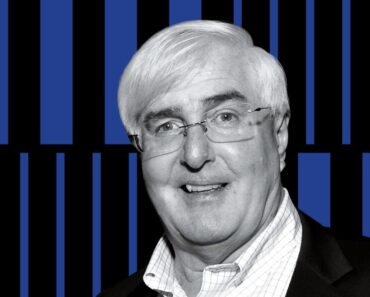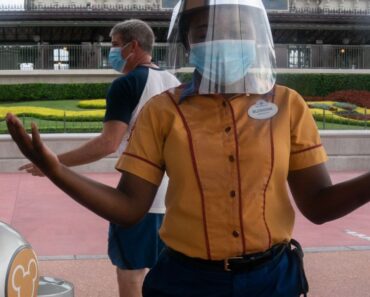This post was originally published on this site
Beleaguered department store chain J.C. Penney is taking another stab at reinventing itself, this time focusing on adding services, reducing clutter, and organizing merchandise in a more logical way.
On Friday the 117-year-old chain announced a new store in Hurst, Texas, between Dallas and Fort Worth. The store, J.C. Penney CEO Jill Soltau said in a statement, will be “the fullest articulation of our customer-centered strategy, an investment in our future and a lab” the company will use to find a way forward for the brand once and for all. It is her first big strategy reveal since becoming CEO 13 months ago.
The 208,000 square-foot store and retail lab will feature services including a fitness studio, a selfie studio (the 21st century take on Penney’s portrait services), a video game lounge, and a barber shop, not services typically associated with Penney’s often drab, cluttered stores. Penney is even reviving its old “Penney’s” logo, with the name written in cursive.
The unveiling comes at a fraught time for Penney, whose sales declines have worsened each quarter in the last year. Penney’s shares, which are at risk of being delisted from the New York Stock Exchange, have been trading around the $1 mark for the last year, a fraction of their value only two years ago.
Anyone who has followed Penney in the last decade will likely get a sense of déjà vu from the news Friday. The retailer has attempted several turnaround attempts since then, yet Penney’s hold on shoppers continues to slide: last year, sales dropped to $11.7 billion, compared to $20 billion in 2007.
Much of that decline was the result of an ill advised attempt in 2012 to reinvent Penney as a hipper cooler retailer, less focused on discounting. Penney took on billions in debt to stay in business, limiting its ability to make investments in the following years.
(In July, with many wondering whether Penney was doomed to the same fate as the now bankrupt Sears, Penney took pains to say it had not hired bankruptcy counsel even as it was looking into restructuring debt. Penney’s long term debt stood at $3.6 billion at the end of last quarter.)
More recently, Penney has done itself few favors. One of the more disastrous moves came under former CEO Marvin Ellison, who left in 2018 to be CEO of Lowe’s, when he brought appliance sales back to Penney after 33 years out of the business. Also on Ellison’s watch, Penney failed to repair its e-commerce infrastructure. The former CEO did attempt to repair the brand through many new initiatives, some similar to what Soltau is testing out, including renovated hair salons, reorganizing merchandise displays, and tidying stores up, but they did little to help Penney.
New initiatives have been rolled out regularly over the last few years, including new brands, new product categories, and new e-commerce features, yet the chain remains imperiled. Compounding its woes, dwindling sales led to cuts in staffing, which along with poor inventory management, and merchandise that left customers yawning instead of shopping, left many Penney stores looking disheveled.
Soltau has admitted in interviews that Penney’s stores have grown cluttered, something she is addressing. As she put it to the Wall Street Journal this week, “You’re combing through the rack to the point you don’t even want to shop.” That makes a move like grouping items by lifestyle at the Hurst a smart one: Penney is testing grouping women’s apparel by activity such as office, sports, casual, and so on.

Soltau has been relatively quiet during her first year as CEO, staying focused on devising a strategy for Penney. The Hurst store is not a prototype for renovations to come. Instead, the store will be a lab used to decide what works before rolling it out to other locations in the 850-store chain.
That’s wise given Penney’s precarious finances, compared to those of better capitalized competitors like Target, Macy’s, and Kohl’s. It will be hard for Penney’s to compete financially with those rivals’ efforts to spruce up their businesses. And many of the elements of Penney’s store tests have a me-too feeling to them, more about catching up to other retailers than leading.
Target, which has spent $7 billion remodeling its stores, has invested in hiring visual merchandisers, people who make sure product presentation is more inviting, something Penney is just now beginning to do. Target has also relaunched its private brands: including the Cat & Jack kids clothing brand which has likely cut into Penney’s former dominance in the category.
Over at Kohl’s, the company has reconfigured all of its stores to handle Amazon returns, a boon to store visits, and recently launched Curated by Kohl’s, a showcase for emerging brands. Macy’s has tested out ideas like lockers for online order pickup and new customer service desks. And for all their efforts, Macy’s and Kohl’s, which enjoy far more financial flexibility than Penney, are hardly thriving.
Penney will not find a panacea in many of these tests, some of them will amount to little more than chasing shiny objects. For instance, Penney is trying out technology that lets a shopper have a store clerk get different sizes and colors of an item while still in a fitting room. Convenient, yes, but that’s a feature also used at luxury chains like Neiman Marcus and Nordstrom that hasn’t done much to help with softening sales trends at the upscale retailers.
Soltau has her work cut out for her: the company said in August it expected comparable sales, which exclude the impact of recently closed stores, would fall between 5% and 6% this year. She still has to contend with a sprawling fleet that has many stores in weak malls, now even more poorly frequented without a Sears. What’s more, Penney has to compete with many new apparel brands, and the growth of apparel rental and reuse markets, and needs to catch up on the e-commerce front.
Bloomberg Intelligence analyst Poonam Goyal said in a note on Friday that the Hurst store “may still not be enough to turn the business around, given the structural challenges around retail foot traffic” and says Penney still “has too many stores.”
Still, in the last year, Soltau has rebuilt Penney’s c-suite, studied what shoppers want, and has been deliberate and sober in formulating her plan. “This store is more than a renovated location,” she said. With any luck for Penney, it will be where the ideas that finally reinvigorate a storied department store sprout.
More must-read stories from Fortune:
—The makers of BarkBox are moving into an often overlooked space in pet wellness
—Why you shouldn’t save your debit or credit card numbers on store websites
—Black Friday deals start next week
—UPS aims to recruit 100,000 holiday workers. That’s no small feat in this labor market
—Instagram sensation Babe Wine now officially endorsed to be sold at NFL games
Follow Fortune on Flipboard to stay up-to-date on the latest news and analysis.






